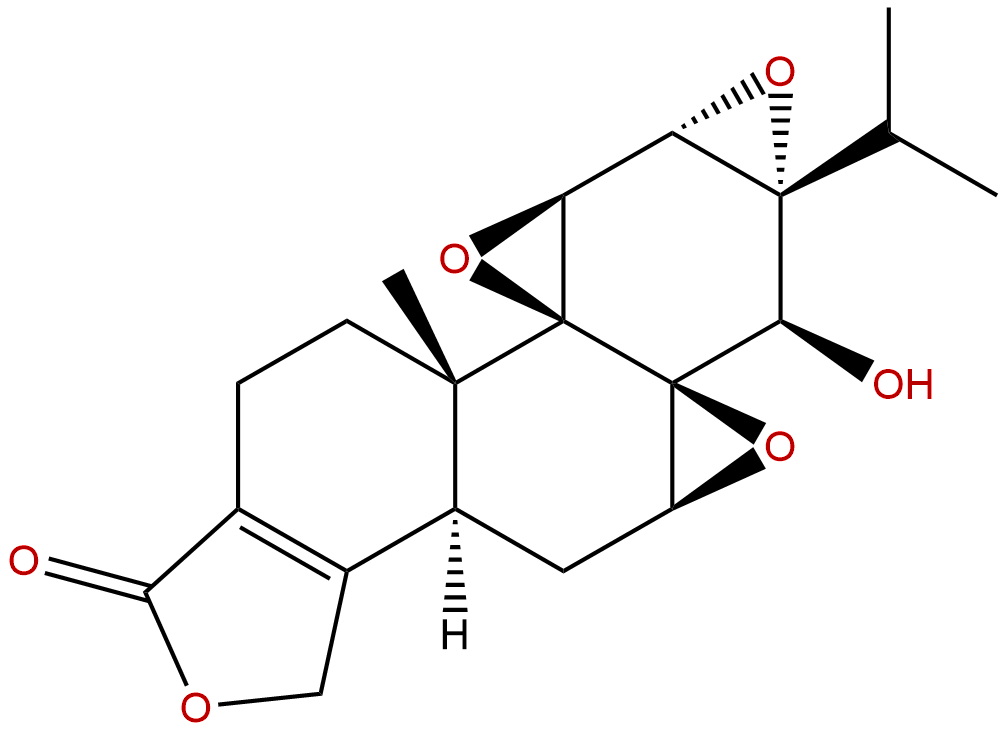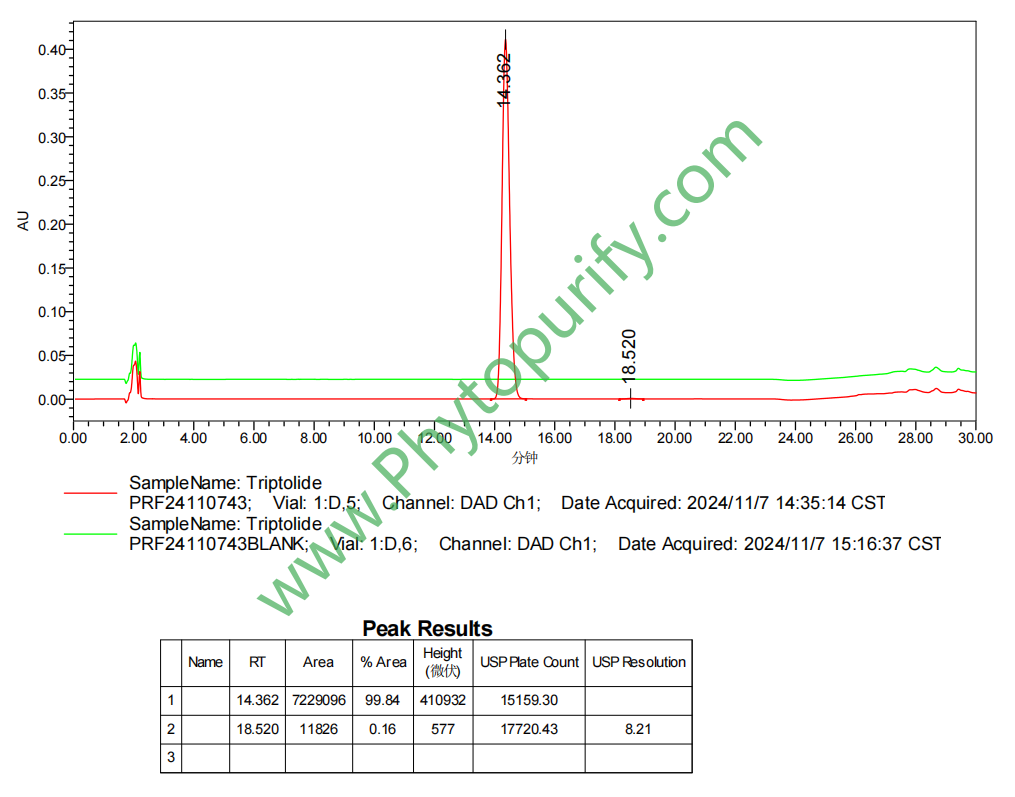
TriptolideCAS No.:38748-32-2
|
||||||||||
 |
|
|
||||||||

| Catalogue No.: | BP1411 |
| Formula: | C20H24O6 |
| Mol Weight: | 360.406 |
Product name: Triptolide
Synonym name:
Catalogue No.: BP1411
Cas No.: 38748-32-2
Formula: C20H24O6
Mol Weight: 360.406
Botanical Source: Tripterygium wilfordii Hook.f.
Physical Description:
Type of Compound: Diterpenoids
Purity: 95%~99%
Analysis Method: HPLC-DAD or/and HPLC-ELSD
Identification Method: Mass, NMR
Packing: Brown vial or HDPE plastic bottle
The product could be supplied from milligrams to grams, upto kiloframs.
Inquire for bulk scale.
Triptolide is a diterpenoid epoxide which is produced by the thunder god vine, Tripterygium wilfordii. It has in vitro and in vivo activities against mouse models of polycystic kidney disease and pancreatic cancer, but its physical properties and severe toxicity limit its therapeutic potential.
Consequently, a synthetic water-soluble prodrug, minnelide, is being studied clinically instead.
Several putative target proteins of triptolide have been reported, including polycystin-2, ADAM10,DCTPP1, TAB1, and XPB. Multiple triptolide-resistant mutations exist in XPB (ERCC3) and its partner protein GTF2H4. However, no triptolide-resistant mutations were found in polycystin-2, ADAM10, DCTPP1 and TAB1. Cys342 of XPB was identified as the residue that undergoes covalent modification by the 12,13-epoxide group of triptolide, and the XPB-C342T mutant rendered the T7115 cell line nearly completely resistant to triptolide. The level of resistance conferred by the C342T mutation is about 100-fold higher than the most triptolide-resistant mutants previously identified. Together, these results validate XPB as a target responsible for the antiproliferative activity of triptolide.
Triptolide has been used to treat a variety of ailments, including rheumatoid arthritis, nephritic syndrome and Lupus erythematosus. It is also a strong antitumor agent. Several angiogenesis assays in numerous research studies have shown that triptolide is an angiogenesis inhibitor. Numerous preclinical studies have shown that TPL inhibits cell proliferation, induces apoptosis and limits tumor metastasis. TPL also has a synergistic action with other treatment methods whereby, it enhances the effects of other antitumor treatments, as studied in various cancer cell lines. This review summarizes the recent developments and discussion of antiangiogenic mechanisms of TPL in cancer, brief outline of its clinical trials and its future in cancer therapeutics.
HPLC of Triptolide
